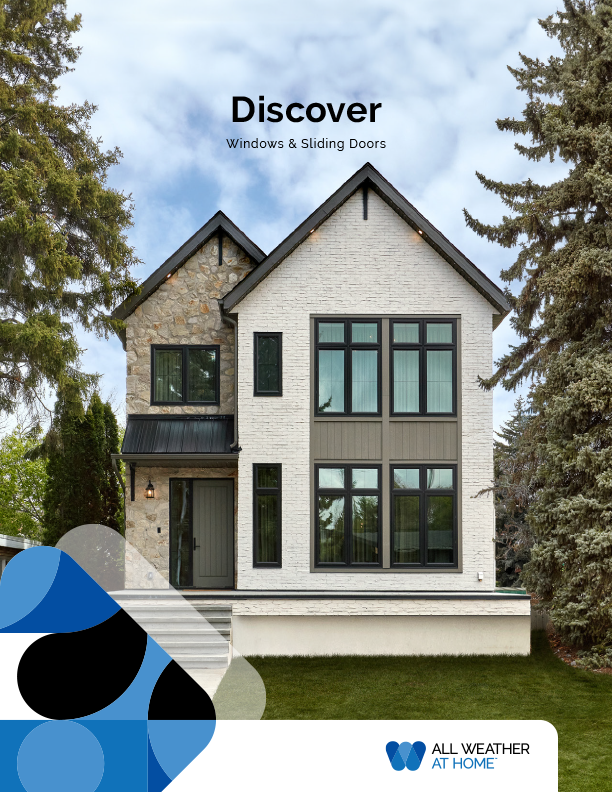To walk through the Edmonton community of North Glenora, a product of the city’s 1950s post-war growth spurt, is to see the city at its most traditional, at least in an architectural sense. One of the city’s first planned neighbourhoods, its neat rows of squat bungalows bask in the shade of treed boulevards, comfortably arranged around a central park and school. Now one of Edmonton’s coveted mature communities, this northwesterly section of the city seems primed for a touch of home reno innovation. Or at least some new shingles.
This is how the story of Jesse Tufts’ North Glenora home transformation began. The humble goal to simply reshingle the roof, though, would become a decidedly short-lived one. Spurred by the unwelcome appearance of frost and condensation on his bedroom walls, and the inviting potential of massively improving his home’s efficiency, a decision was made for more significant changes.
“It was a very poorly insulated house, as many of the buildings of that era are. So we knew when it was time to replace the shingles, we should upgrade the attic insulation,” Jesse explains. From this, the plans quickly morphed into a full new second storey retrofit. The addition of a new floor had several implications for the 1953 built residence: a new roof, new siding, more space and, most importantly, more insulation.
On the job inspiration
The possibility for a more insulated structure intrigued Jesse, and not just because of the promise of frost-free living spaces. As the Lead R&D Engineer at All Weather Windows, Jesse had been working with door cut-outs, a byproduct of the installation of window lites in door slabs. Once destined for the landfill, Jesse and his team of engineers and industrial designers had found alternative uses for the high-density chunks of foam, most notably in the next generation of attic hatches. Celebrated for their high R-value (the insulating capacity of a material), the cut-outs provided Jesse with the inspiration to turn his home renovation into a full-blown evolution.
“Energy simulations showed, if we put three layers of this underneath the new siding on the house, we could get to a net zero level of efficiency,” says Jesse, explaining that the exceptional insulation afforded by the cut-outs meant they could completely circumvent the need for natural gas heating. “Using this waste product as insulation was an enabler to get us all the way to net zero.”
Zero hour
The concept of a net zero home is simple: the amount of energy consumed by the building is equal to the amount of energy produced by it. To actually build one can be particularly less so. Despite this, Jesse was determined to turn his home into an exceptional demonstration of energy efficiency, leaning into his practical career experience and innate passion for bringing new ideas to life.
With the new enhanced insulation offered by the door cut-outs, other home efficiency add-ons began to suddenly make sense: passive solar and an air source heat pump were now viable as the main heat sources for the building, while a heat pump hot water tank and drain water heat recovery system provide efficient hot water, no natural gas required. All Weather Windows’ triple-pane Apex 9100 windows with acrylic wrap were installed to provide maximum energy efficiency while matching the house’s new modern styling. To top it off, a well-positioned 12.24 kW solar array on the new roof provides enough energy to completely offset yearly energy use, making the home fully net zero. All told, the system allows Jesse and his family to enjoy credits on their energy bills during the summer months (i.e., they supply more power to the grid than they consume) while sipping on electricity and cutting-out natural gas in the winter.
Knowledge is power
Though Jesse’s sophisticated set of mechanical and electrical systems may seem daunting to the average homeowner, and his skill set ideally suited for the task, he emphasizes that a net zero home is within reach for most.
“What people need to understand is you can get to net zero with fairly standard construction methods and materials; you just have to build it right,” he contends. “People think net zero requires some spaceship of a house with all this high technology stuff, but the more insulated and the more efficient you build the house, the less technology you need because you don’t have to provide all this heat from a complicated mechanical system. You build it so the amount of heat you need is so little, it almost doesn’t matter where it comes from.”
With the second storey and exterior complete, and his sights set on the main floor and basement, Jesse hopes that the appeal and accessibility of net zero homes continues to grow. Already he sees promise in the uptick of passive home certified builders and improved building codes. But to truly change how Canadians think about the efficiency of their homes, Jesse argues that building awareness of the wide range of solutions currently available to most homeowners is key.
“People may not understand that it’s an option. People just expect they’re going to have a natural gas furnace and that solar is too expensive. They just assume the status quo is the most economical way to build,” he explains before laughing. “I just got my first negative electricity bill for June, which is pretty sweet.”
To follow Jesse’s net zero home renovation, visit his Instagram account @yegnetzero. For more information on how you can make your home more energy-efficient, visit All Weather Windows.










